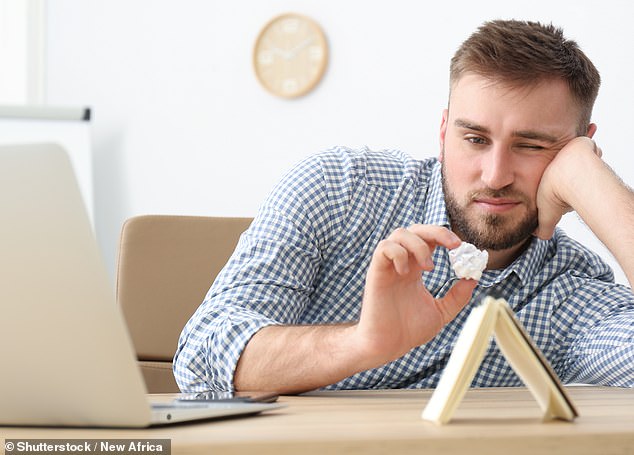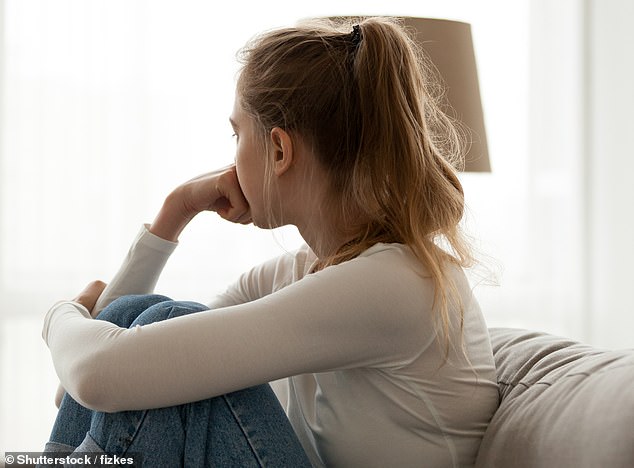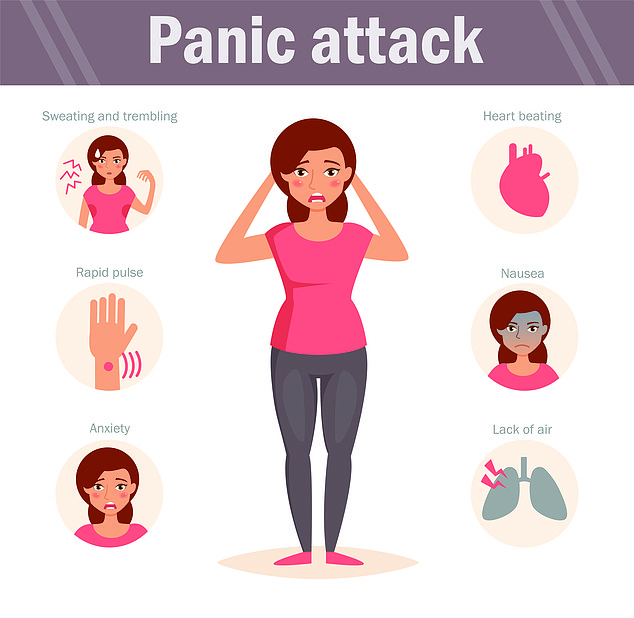A panic attack can disrupt your day, even your week. And while it’s possible to identify a cause (losing a job or getting divorced), a long list of seemingly harmless habits can also cause an attack.
From pouring a morning cup of coffee to keeping up with the news, everyday actions can push someone prone to anxiety over the edge.
Even stepping out into the cold winter air can cause panic. Actress Elizabeth Olsen recently revealed that going from a high temperature to a cold one triggered her panic attacks.
These anxiety attacks are sometimes confused with heart attacks because the signs often overlap. Both can cause a person to hyperventilate and experience chest pains, shortness of breath, sweating, and nausea.
About one in 10 Americans experience a panic attack each year, and about a third will have at least one at some point in their lives.
For many, panic attacks seem to occur out of nowhere, but experts warn that certain everyday habits that we consider mundane and harmless could be what push people over the edge.
Elizabeth Olsen, pictured in September 2024, detailed her struggle with anxiety, saying she had an attack about every hour. Even going from a hot temperature to a cold temperature could cause it.

About one in 10 Americans experience panic attacks each year, while one-third will experience one at least once in their lives.
Elizabeth Olsen opened up about her struggle with panic attacks when she was 20 years old. that rang every hour.
She said: “It was literally every time there was a change in something: from hot to cold, from hunger to fullness. I thought, “Oh, is that okay?” And then it snowballed and became a habit.
‘I lived on 13th Street between 6th and 7th. I was crossing Sixth Avenue and 14th Street and I realized I couldn’t cross the street; I stood against the wall and thought I was going to drop dead at any moment.’
In a panic attack, symptoms appear suddenly, peak, and gradually dissipate, although it may seem like an eternity.
There is usually a trigger, such as stress or fear, but sometimes they occur without a clear cause. At this point, the body’s fight or flight response goes into overdrive.
Physical symptoms follow, including chest tightness, rapid heartbeat, hyperventilation, dizziness, and tremors.
Feelings of panic and racing thoughts intensify. The person may have a sense of impending doom or feel like they are going to die. You often feel as if you are going to suffocate.
The after-effects resemble a hangover, causing fatigue, headaches, and a feeling of emotional and physical exhaustion.
One panic attack is enough to convince a person that they never want to experience another one, and they can try probing their own lives to identify stressors that could plunge them into another panic.
But if they’re too focused on uncovering repressed trauma, they may not be looking for the smaller things they do every day.
One of those things that drives panic attacks is the fear of having another panic attack.
Attiya Awadallah, a licensed therapist in New York who primarily treats Millennials and Gen Zers, told DailyMail.com: ‘One of the biggest triggers I see is fear itself. Clients often suffer from panic attacks simply because they are afraid of having one.
“This anticipatory anxiety primes the body to react to the slightest sensation of discomfort, escalating into a full-blown attack before you realize what’s happening.”
The fear of a panic attack (or any perceived threat) triggers the body’s fight-or-flight response, which initiates the production of the hormones adrenaline and cortisol, as well as the neurotransmitters dopamine and serotonin.

Avoidance behavior and procrastination are often a way for anxious people to avoid situations that trigger panic attacks. But experts say this strategy always backfires and ultimately causes more panic.
Once the fight or flight response is activated, physical symptoms intensify anxiety, which makes those symptoms even worse and triggers a feedback loop. The fear of an attack drives the panic response, intensifying anticipatory anxiety into a full-blown panic attack.
Leaving your apartment in winter could also make you panic, according to Awadallah.
Rapid changes between hot and cold environments can raise your heart rate and cause physical discomfort. For those with higher anxiety, these bodily sensations can be misinterpreted as the beginning of a panic attack, resulting in a self-fulfilling cycle.
Adopting the attitude of ‘why do today what you can put off until tomorrow’ is also known to cause panic. However, one in five Americans is a chronic procrastinator.
Ms Awadallah said: Avoiding difficult or uncomfortable tasks may provide temporary relief, but it allows anxiety to build up in the background.
“Every time the task is delayed, the anxiety grows stronger, until the mounting pressure explodes into panic, often at unexpected moments.”
Many people develop avoidance behavior or procrastinate to avoid situations in which they might have a panic attack, such as staying away from the subway or avoiding crowded shopping malls and music venues.
At the same time, they may overcommit to activities and responsibilities to combat a natural inclination to isolate themselves and avoid public gatherings. Staying busy can often take your mind off anxiety, and being with friends can also relieve symptoms.
But accepting too many social commitments or taking on too many responsibilities at work can backfire, according to Dr. Danyell Taylor, a licensed therapist in Chicago.
Dr Taylor told DailyMail.com: ‘I would add over-scheduling or over-commitment to this discussion, as we often find ourselves filling our calendar with back-to-back activities, which can leave us little time for rest and recovery.
“Unknowingly, this can cause anxiety and panic.”

The fear of having a panic attack can itself cause a panic attack. Experts say it creates a feedback loop, where the fear of attack feeds the actual panic response, turning anticipatory anxiety into a full-blown panic attack.

A panic attack can last an agonizing 10 to 20 minutes. It often causes shortness of breath, palpitations, chest pain, and sweating.
He also warned against skipping meals, a widespread practice loved by wellness gurus, celebrities and biohackers who call it “intermittent fasting.”
Dr Taylor said: “While I think most of us know the importance of eating well and proper nutrition, neglecting nutrition can lead to low blood sugar, which can trigger symptoms of anxiety and panic.”
Without food, blood sugar levels plummet, causing dizziness, irritability, and brain fog. Skipping meals can also trigger the release of stress hormones, fueling feelings of anxiety.
Even our everyday speech can generate panic. According to Awadallah, labeling yourself as an anxious or stressed person and assigning a part of your personality to it designates anxiety as a central part of your identity.
By expecting to be anxious in every situation, you become hypervigilant and overly sensitive to stressors like people or loud noises, leading to even greater anxiety.
She said: ‘Encourage a more neutral or compassionate view of yourself. Helping clients reframe their language (e.g., “I feel anxious” instead of “I’m anxious”) can create distance between the individual and the emotion, reducing its impact.’
Experts also advise putting down your phone.
Ms Awadallah said: “Technology can overstimulate the brain, especially when combined with fatalistic scrolling or constant exposure to negative news.”
“The relentless flow of information, especially catastrophic or fear-inducing content, keeps the brain in a heightened state of anxiety.”


